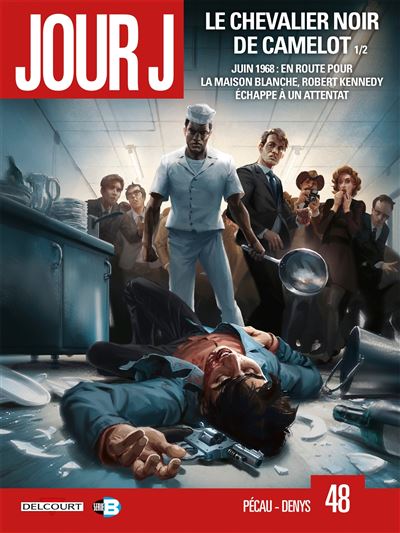The first volume of A Walk Through Hell described the entry of a police duo into a hangar. Nothing more banal? Except that they still haven't come out several hours later and this place is getting stranger and stranger. What does this last volume have in store?
You don't change a team…  This second volume of A Walk Through Hell is still written by Garth Ennis, drawn by Goran Sudžuka and colorized by Ive Svorcina. The debut, edited by Black River, followed FBI detectives Shaw and McGregor to track down their colleagues Hunzikker and Goss. They are guided by Paul Carnahan, a child killer whose guilt they have never proven. Even stranger, this criminal is dead. The police duo fears to be in the same state because they no longer have a pulse. Faced with this unlikely situation, McGregor reasoned to reassure himself. If he breathes it is because he is not dead while Shaw cools him right away because their body reacts like that of a corpse. The hair grows but she has no rules. The agents do not eat and are not hungry.
This second volume of A Walk Through Hell is still written by Garth Ennis, drawn by Goran Sudžuka and colorized by Ive Svorcina. The debut, edited by Black River, followed FBI detectives Shaw and McGregor to track down their colleagues Hunzikker and Goss. They are guided by Paul Carnahan, a child killer whose guilt they have never proven. Even stranger, this criminal is dead. The police duo fears to be in the same state because they no longer have a pulse. Faced with this unlikely situation, McGregor reasoned to reassure himself. If he breathes it is because he is not dead while Shaw cools him right away because their body reacts like that of a corpse. The hair grows but she has no rules. The agents do not eat and are not hungry.
Their deputy director of Northern Irish origin, Driscoll enters the hangar to save them while all the men refuse. Yet it remains marked by its past mistakes. Driscoll recounts the interrogation with a Nazi refugee in the United States. The last part of A Walk Through Hell makes us think about guilt and we return to the reasons that pushed everyone to join the police. The reader also discovers the role of a commissioner. She composes duets that must balance each other by analyzing their characters and actions.
It takes all the talent of the cartoonist Sudžuka to make this world believable. The apparent simplicity of the style is then decisive. We can understand it in the bonuses with two pages where we go from the scenario to the final page.
A Walk Through Hell, a world without rules

The interior of this hangar is stranger and stranger… The duo is constantly moving forward but the space loses its meaning. Nature is just as upset in A Walk Through Hell. Everyone sees a different place according to their past.The weather is also different. It flows much faster inside than outside. Two days outside becomes two weeks in. Past and present mingle. We enter a Gothic temple when the reader discovers that these investigators have an indirect link with a former SS admirer of Notre-Dame. This presence in the hangar shows the continuity of the threat of racism through time.Through this place, A Walk Through Hell becomes a political narrative.
In the face of this danger, we can count on the courage of women. More generally, it is the oppressed who resist best. However, Garth Ennis rejects communitarianism. For Shaw, speaking on behalf of a group sometimes means claiming superiority and alienating the majority. It claims nuance and the necessity of dialogue.
A Walk Through Hell is also a reflection on the system. The screenwriter denounces the failure of the reintegration of juvenile offenders and the police want to eliminate the excesses of society. Conversely, Paul Cannahan wants to pervert the world. All his suffering in a residential school for delinquents is an experiment to see the depth of the desire to hurt. He also learns how to hide from the system. The further we go in the story, the more the image of a conspiracy is formed. The middle of the book shatters everything we thought about this space.
The metaphorical meaning of this place changes. It represented the crisis of the United States but here takes a universal and religious turn. It is the place of evil, the residence of the antichrist who took human form.
A Walk Through Hall continues the heroes' plunge into darkness but these episodes also go further through the new character of Driscoll and the description of the enemy. This volume is a great success by the quality of the creative duo that will return to Black River.
You can find on the site the chronicles on Magic: The Gathering and Far Cry of the same publisher, Black River.





































